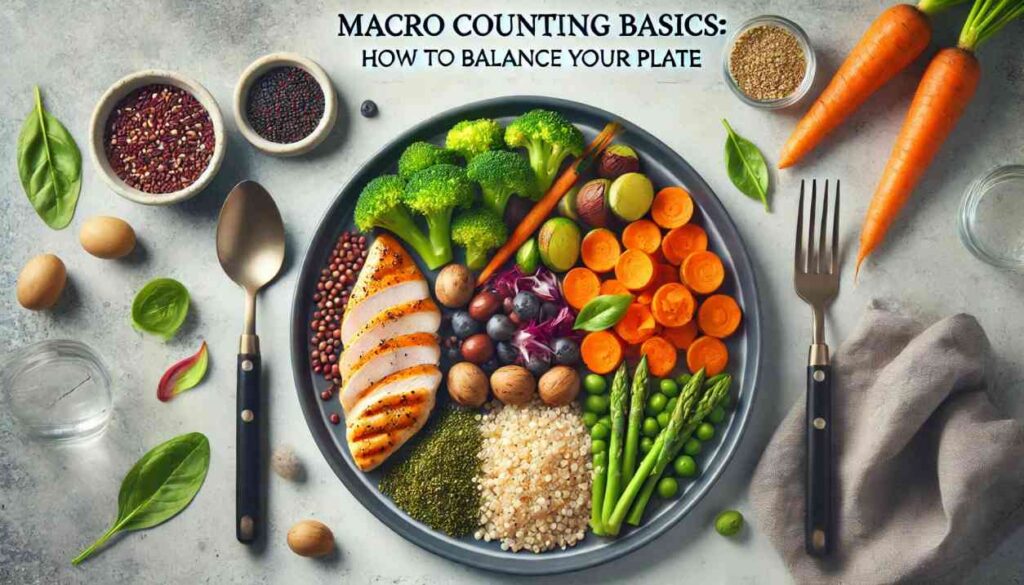
Our product evaluations are completely independent and free from advertisements. Should you make a purchase via the links on our website, we might receive a small commission, which is a key support for our review process. For more details, click here.
Introduction: Why Macronutrients Counting?
If you’re like me, you’ve probably dabbled in a dozen different diets, hoping to find the magic formula for weight loss. But what I’ve learned is this: there’s no magic. It’s about understanding what your body needs—and that’s where macro counting comes in.
Tracking macros (short for macronutrients) is like giving your plate a tune-up. It’s not about restriction; it’s about balance. Let me walk you through the basics of macro counting and show you how it changed the way I approach food.
What Are Macros?
Macros are the three main nutrients your body needs to function:
- Proteins: Build and repair muscles. Think chicken, fish, tofu, eggs, or lentils.
For more high protein diets click here.
- Carbohydrates: Your body’s primary energy source, found in fruits, grains, and vegetables.
- Fats: Essential for brain health and hormone production. Look for avocados, nuts, and olive oil.
Here are examples of Low carb High Fats diets you can read more about.
Each macro has a specific calorie count per gram:
- Protein: 4 calories per gram
- Carbohydrates: 4 calories per gram
- Fats: 9 calories per gram
Why Count Macros Instead of Calories?
I used to be a die-hard calorie counter, but I often found myself tired, hungry, and frustrated. Then I discovered that not all calories are created equal. Eating 1,500 calories of donuts doesn’t fuel your body the same way 1,500 calories of balanced meals does. Counting macros ensures that you’re not just hitting a calorie target but giving your body the nutrients it needs to thrive.
How to Calculate Your Macros
Don’t worry—it’s not as intimidating as it sounds. Here’s how I started:
- Set Your Calorie Goal: Start with your Total Daily Energy Expenditure (TDEE), which factors in your activity level. There are plenty of online calculators to help with this.
- Divide Your Calories into Macros:
- Protein: 0.8–1.2 grams per pound of body weight (more if you’re active).
- Fats: 20–35% of your total calorie intake.
- Carbohydrates: Fill the rest of your calorie budget.
For example:
- A 1,800-calorie goal could break down into:
- 40% carbs = 180g
- 30% protein = 135g
- 30% fat = 60g
How to Balance Your Plate
Balancing macros doesn’t mean overhauling your diet overnight. Here’s how I like to break it down for a single meal:
- Protein First: Fill about a quarter of your plate with lean protein—grilled chicken, salmon, or beans.
- Add Carbs: Another quarter goes to complex carbs like sweet potatoes, quinoa, or whole-grain rice.
- Don’t Fear Fats: Drizzle olive oil over your veggies or add some avocado slices.
- Pile on the Veggies: The remaining half is for colorful, fiber-rich vegetables like broccoli, spinach, or bell peppers. Here is more info.
Why Macro Counting Works: My Personal Experience
When I first started macro counting, I’ll admit—it felt like a lot of math. But once I got the hang of it, it completely changed how I approach meals. Here’s what I love about it:
- It’s Flexible: Unlike restrictive diets, I can enjoy the foods I love in moderation. Want pizza? Fit it into your day!
- It’s Educational: I now understand how different foods fuel my body and how to create balanced meals that work for me.
- It’s Sustainable: Macro counting isn’t a quick fix—it’s a long-term strategy that’s easy to adapt to your lifestyle.
By focusing on macros, I stopped labeling foods as “good” or “bad” and started seeing them for what they are: fuel for my goals.
The Role of Exercise
Here’s the deal: Balancing macros is a fantastic start, but pairing it with exercise is what makes the magic happen. Whether it’s lifting weights, yoga, or walking, moving your body helps you build muscle, burn fat, and feel amazing. And remember, muscle is a calorie-burning powerhouse, even when you’re resting!
My Favorite Macro-Friendly Meals
Here are some easy meals that helped me hit my macros:
- Breakfast: Greek yogurt with berries, a sprinkle of granola, and chia seeds (Protein: 20g, Carbs: 25g, Fats: 10g).
- Lunch: Grilled chicken with quinoa, roasted veggies, and avocado slices (Protein: 30g, Carbs: 40g, Fats: 15g).
- Dinner: Salmon with sweet potatoes and a spinach salad dressed in olive oil (Protein: 35g, Carbs: 30g, Fats: 20g).
Final Thoughts
Macro counting isn’t a one-size-fits-all solution, but it’s helped me create meals that fuel my body and fit my goals. If you’re looking to feel more energized, stay full longer, and finally make peace with food, give it a try. Start small, be patient, and remember: It’s about balance, not perfection.
You’ve got this! Let me know in the comments if you’re ready to try macro counting—or if you already do, share your favorite tips!